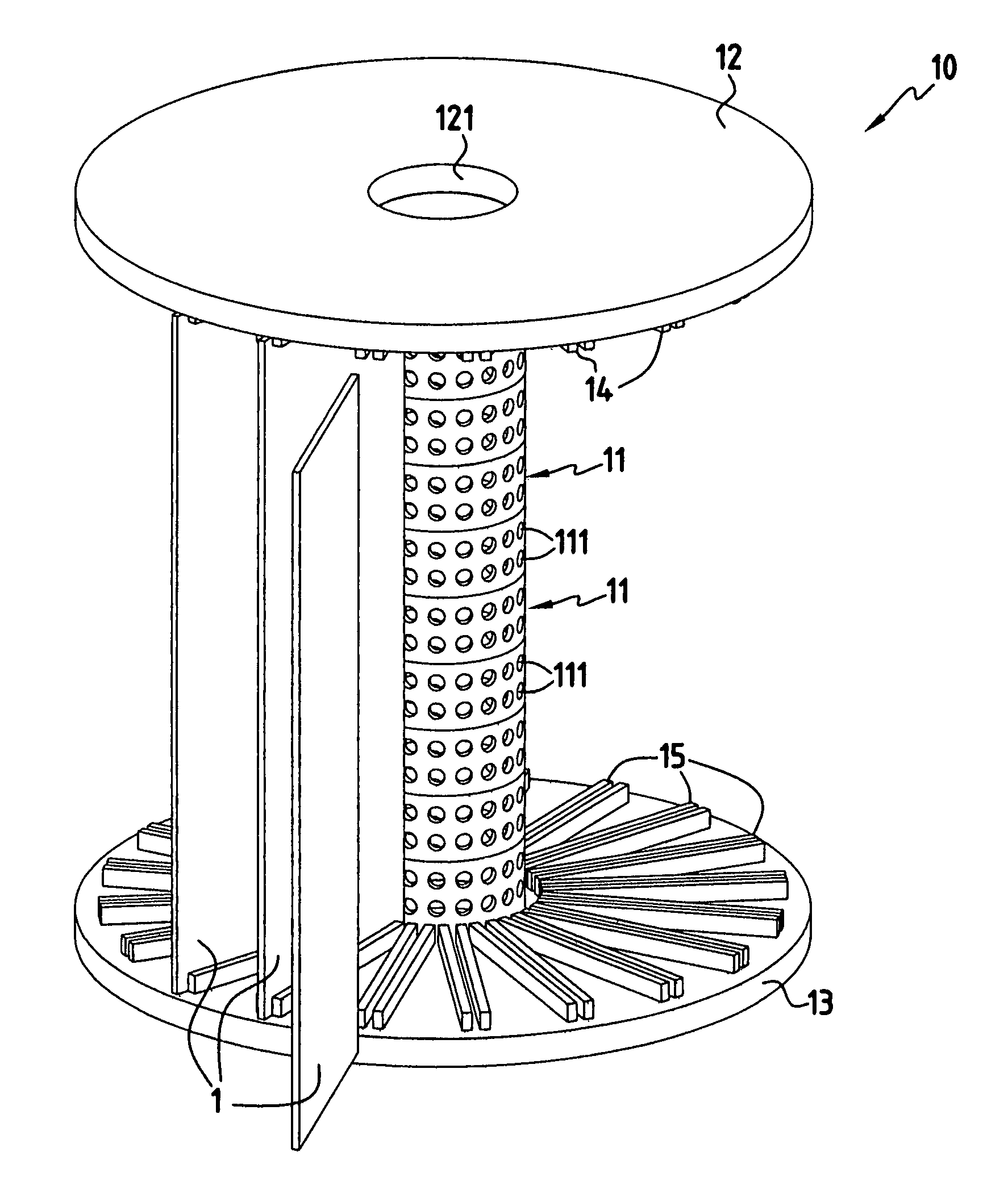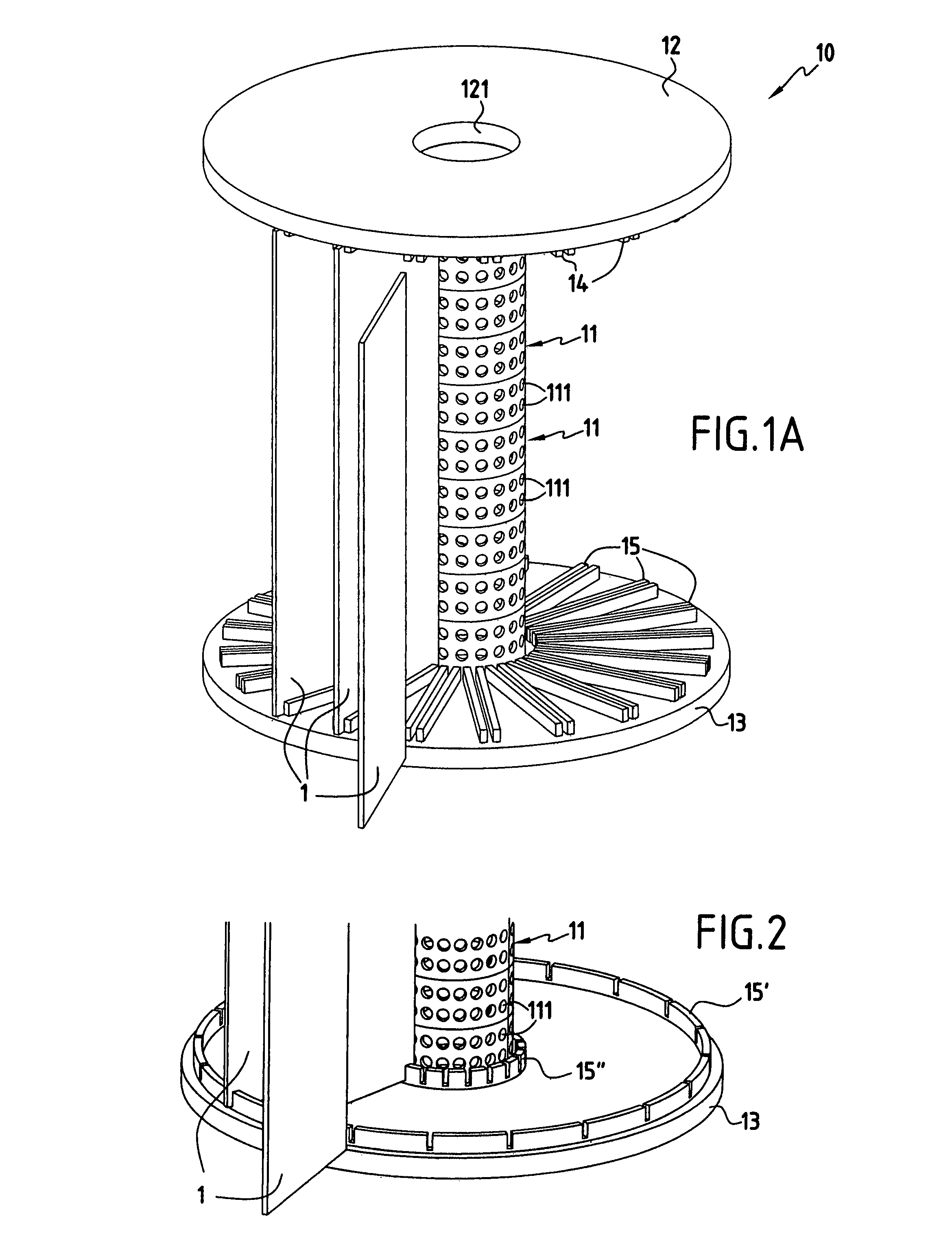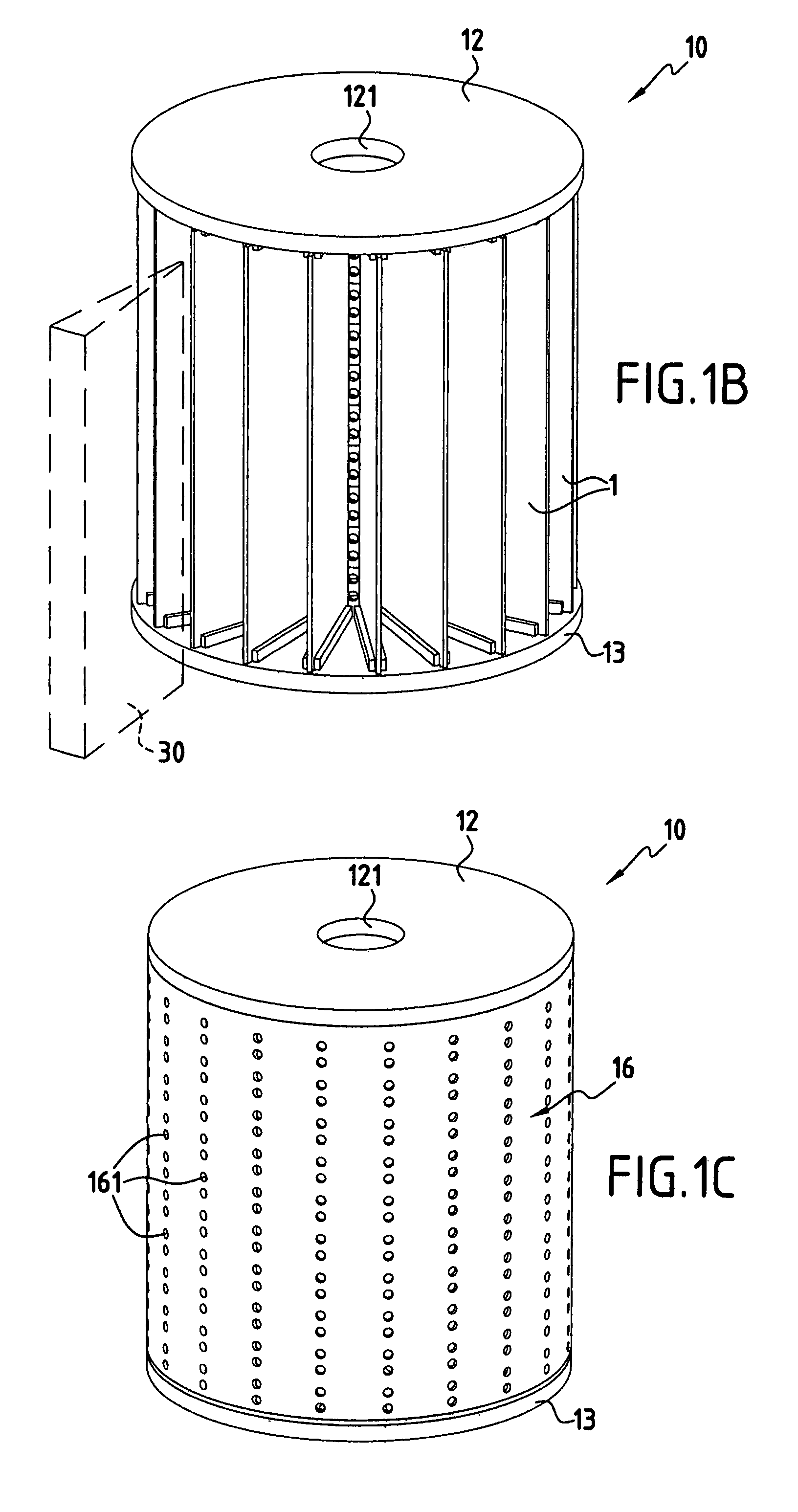Method of densifying thin porous substrates by chemical vapor infiltration, and a loading device for such substrates
a technology of chemical vapor infiltration and densification method, which is applied in the direction of chemical vapor deposition coating, coating, electrical apparatus, etc., can solve the problems of dispersion between densification and dispersions, the extent of deformation of parts, and the premature depletion of reagents, so as to reduce the densification gradient of substrates
- Summary
- Abstract
- Description
- Claims
- Application Information
AI Technical Summary
Benefits of technology
Problems solved by technology
Method used
Image
Examples
Embodiment Construction
[0040]The chemical vapor infiltration method for densifying thin porous substrates in accordance with the invention makes use of specific tooling for loading purposes that are constructed and assembled as described below with reference to FIGS. 1A to 1C.
[0041]FIG. 1A shows a loading device or tool 10 at the beginning of the operation of loading substrates 1 that are to be densified, i.e. before the tooling is closed and inserted in a reaction chamber of an industrial chemical vapor infiltration installation. The tooling 10 comprises a vertical tubular duct 11 disposed between two circular plates 12 and 13. The top end of the duct 11 co-operates with a central opening 121 formed through the plate 12, and the bottom end of the duct 11 is closed by the plate 13. In a variant, the bottom end of the duct 11 could co-operate with a central opening formed through the plate 13, in particular to enable tooling devices to be superposed in a reaction chamber, as explained below.
[0042]The facin...
PUM
| Property | Measurement | Unit |
|---|---|---|
| thicknesses | aaaaa | aaaaa |
| refractory | aaaaa | aaaaa |
| temperature | aaaaa | aaaaa |
Abstract
Description
Claims
Application Information
 Login to View More
Login to View More - Generate Ideas
- Intellectual Property
- Life Sciences
- Materials
- Tech Scout
- Unparalleled Data Quality
- Higher Quality Content
- 60% Fewer Hallucinations
Browse by: Latest US Patents, China's latest patents, Technical Efficacy Thesaurus, Application Domain, Technology Topic, Popular Technical Reports.
© 2025 PatSnap. All rights reserved.Legal|Privacy policy|Modern Slavery Act Transparency Statement|Sitemap|About US| Contact US: help@patsnap.com



